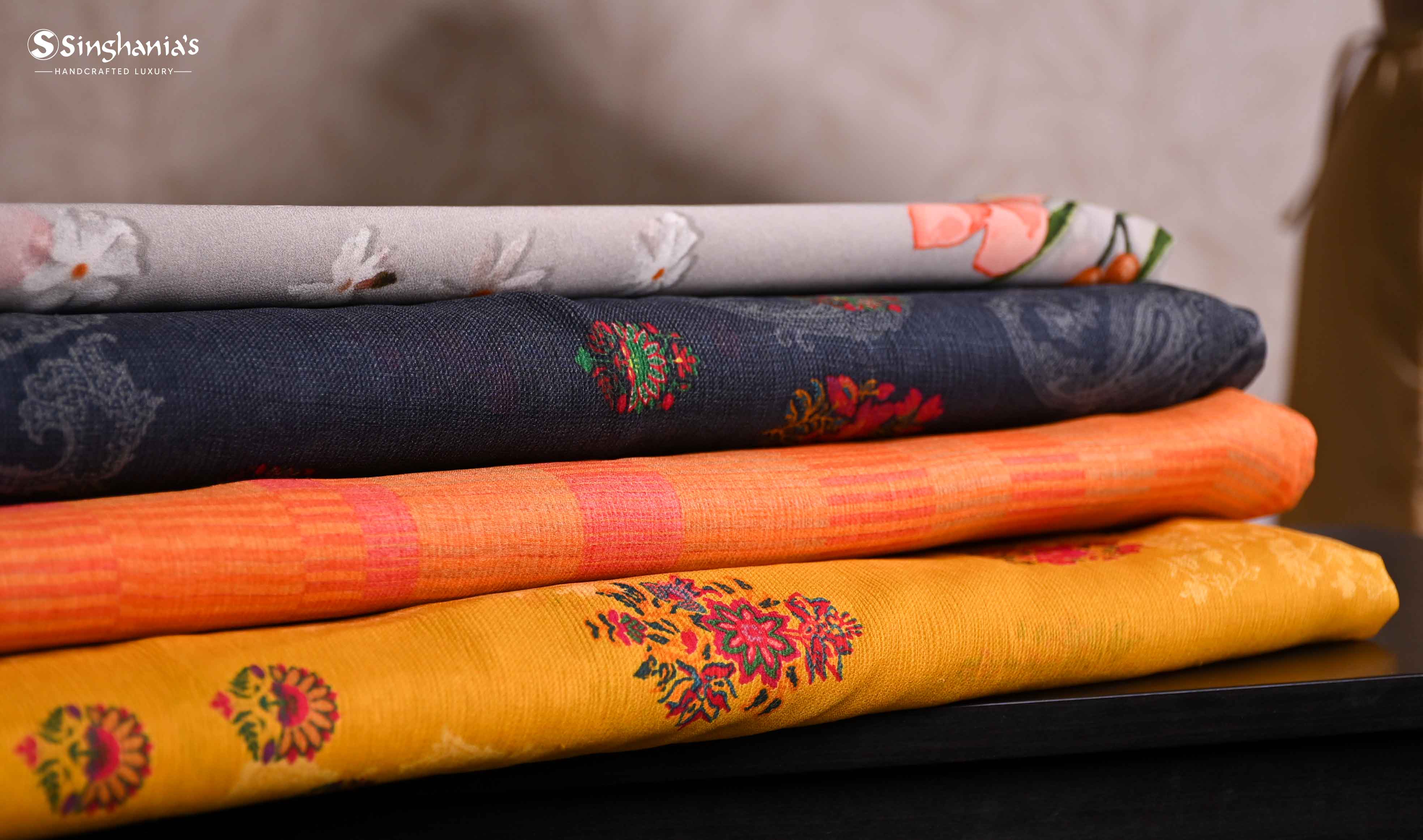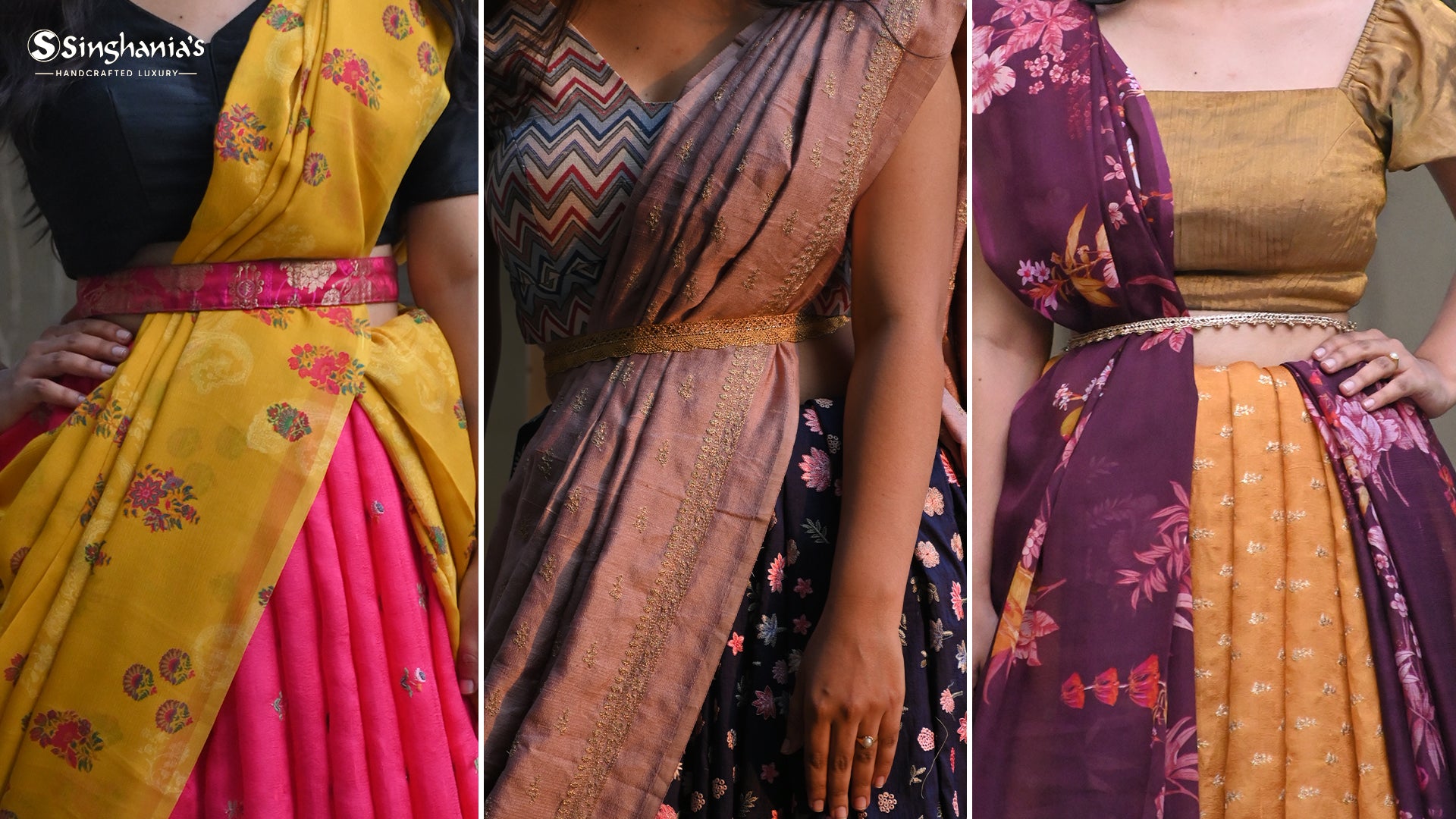Today in 'The journey of Banarasi silk fabric' blog, join us on an exciting journey through time as we unravel the fascinating origins and evolution of Banarasi silk fabric - from its humble beginnings in Varanasi to becoming a global phenomenon let's explore hundreds of hues and designs Banarasi fabric has to offer. So let's dive in.
Origin of the Banarasi Silk

The origins of the Banarasi silk fabric can be traced back to the Mughal era when the city was an important centre of trade and commerce. Mughal Emperor Akbar was believed to be the pioneer of Banarasi weaving as the craft flourished and reached new heights under his rule. The Mughals were great patrons of the arts and they encouraged the development of new textile techniques and designs.
The Banarasi silk fabric is characterised by its fine quality and intricate designs. The weave is usually decorated with gold or silver zari work, and it often features elaborate geometric or floral buttas and patterns. The fabric is traditionally used for making sarees, dupattas, lehengas, and other garments.
Evolution of Banarasi Silk Fabric

The weaving of Banarasi fabric is as fascinating as its sense and allure. Banarasi fabrics are woven on the magnificent jacquard loom, with around 5600 thread wires and all are 45 inches wide. A thread (weft) will go over and under a set of threads(warp). The precise order in which the weft passes over and under the warp will regulate the pattern woven into the fabric.
An artist creates design boards by outlining the designs on graph paper with colour concepts. The punch cards come into sight before choosing the final design, then hundreds of cards are formed to achieve a single pattern on a piece of fabric. The precise order in which the weft passes over and under the warp threads determines the design and pattern of the fabric.
When the British took over India, Banaras became an important centre for trade and commerce. The British encouraged the production of Banarasi silk fabrics and this led to an increase in demand for these fabrics in Europe and America. Since then the legacy of Banarasi weave has increased day after day
The Banarasi silk weave has undergone many changes over the centuries, but it remains one of the most popular types of silk fabrics produced in India. The popularity of Banarasi silk fabric has spread throughout India and other Asian countries, where it is used for making traditional garments.
The designs on these fabrics have become more intricate over time. In addition, new methods of production have been developed that allow for a greater range of colours and patterns. Today, Banarasi silk fabrics are some of the most desired in the world.
The knowledge and wisdom handed from generation to generation preserve the Banarasi authenticity. But the touch of traditional Banarasi weaving is slowly losing its hold on its admirers. The constantly changing trends and the quick manufacturing demands make it difficult for artisans to sustain.
The Banarasi patterns and weaves are changing but the age-old weaving techniques are still the same. The modern take on Banarasi fabrics online is a fusion of crafts and desires. Exploring new fabrics, colour palettes, and motifs while reserving traditional classic patterns is the new trend in Banarasi weaving.
Current Trends in Banarasi Silks

Banarasi silk has been around for centuries and is known for its intricate designs and rich colours. Today, the fabric is still popular among those who appreciate its quality and craftsmanship. Bold colours in Banarasi fabrics are creating quite a buzz around it. This trend adds a real pop of colour to any outfit. The intricate designs that are characteristic of Banarasi silk are still very much in fashion. These beautiful fabrics are perfect for special occasions or simply to add a touch of luxury to your everyday wardrobe.
As always, quality is paramount when it comes to Banarasi silk. The luxurious fabric curated using traditional methods ensures that it will retain its high standards. Last but not least, Banarasi silk is the epitome of timeless elegance. Its classic style will never go out of fashion, making it a wise asset for your wardrobe collection.

Banarasi silk fabric has a long and fascinating history. From its origins in India over 2000 years ago, this luxurious and iconic material has grown to become an important part of Indian artistry and culture. With its intricate designs, high-quality craftsmanship, and vibrant colours, it is no wonder that the tradition of weaving Banarasi silk fabric continues today.
Fabric by Singhanias will always be there to help you pick the best Banarasi Fabrics online for every occasion. Whether you are looking for something special or just want a classic look with timeless appeal, our Banarasi silk fabrics will be worth your while.



